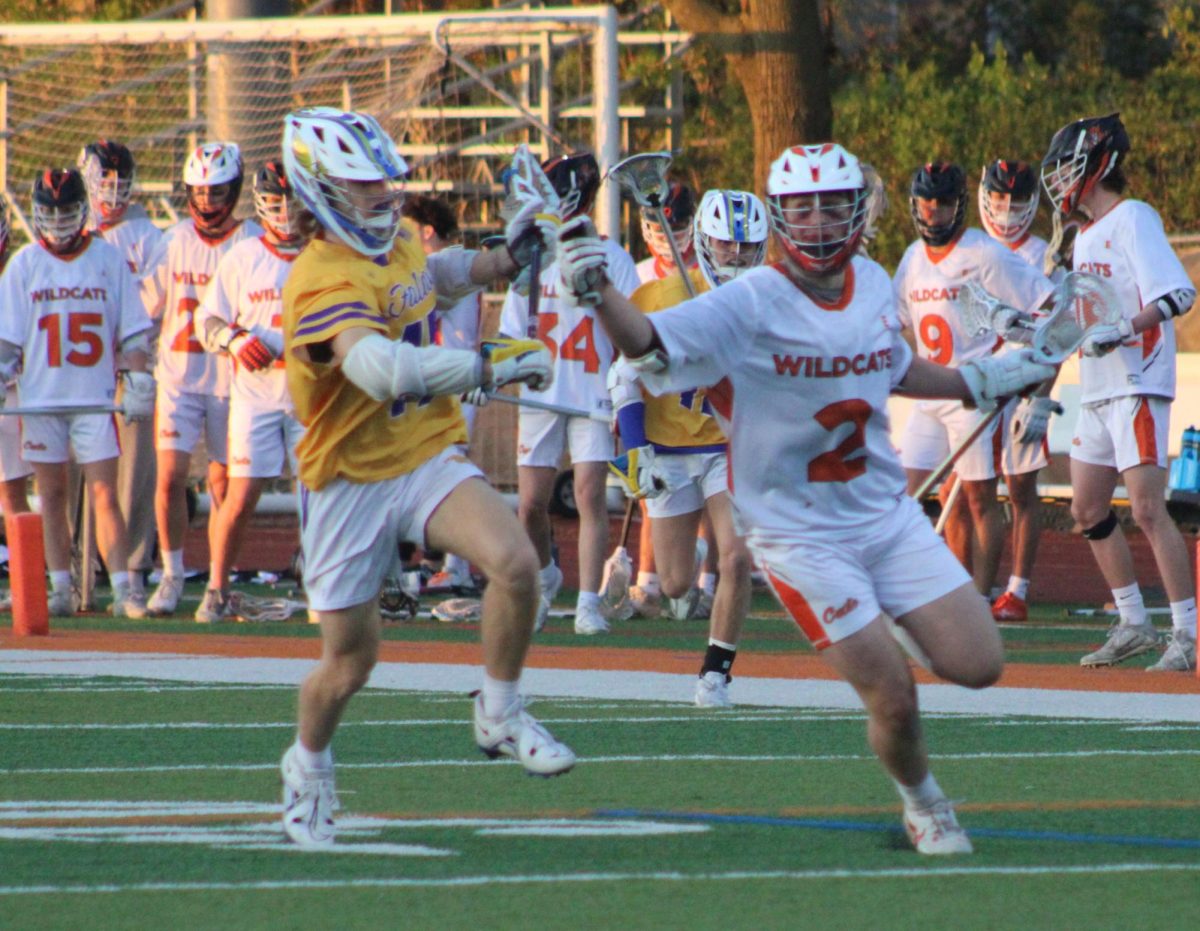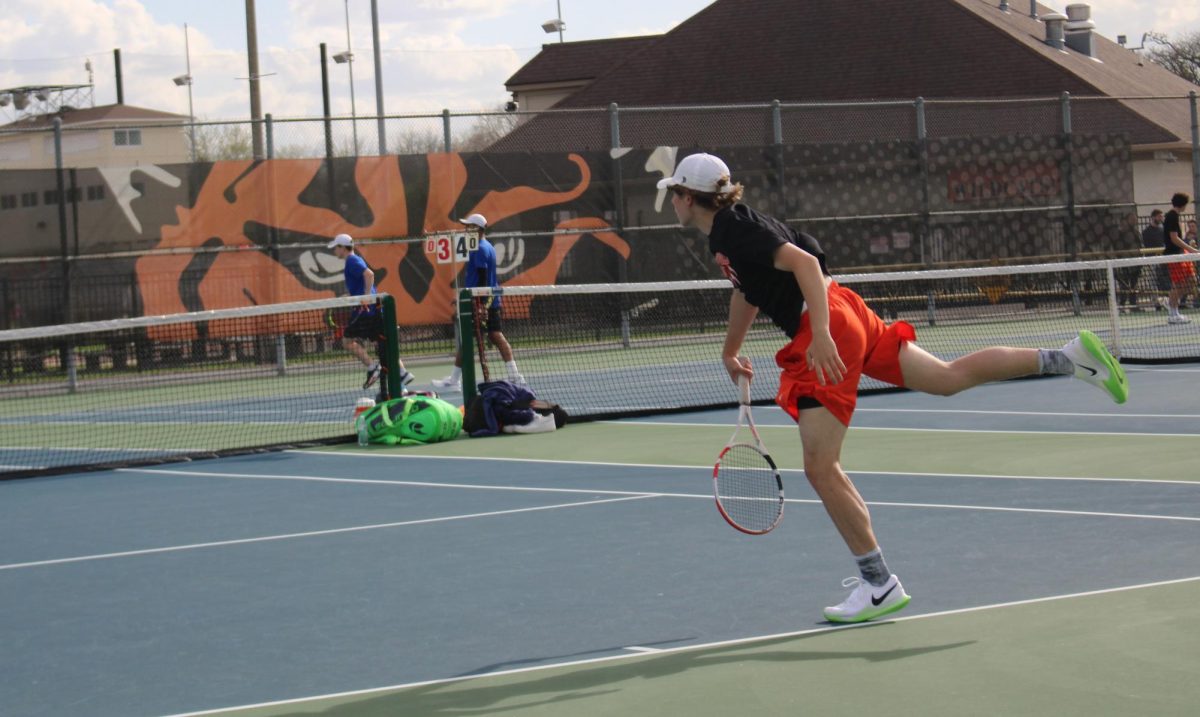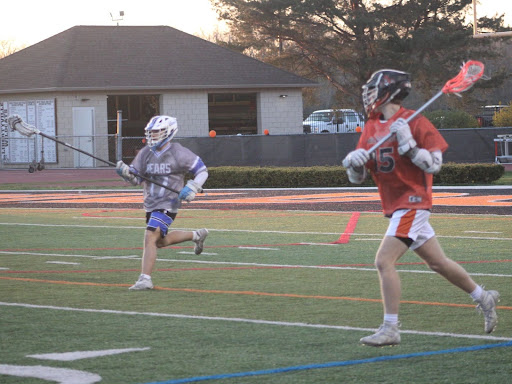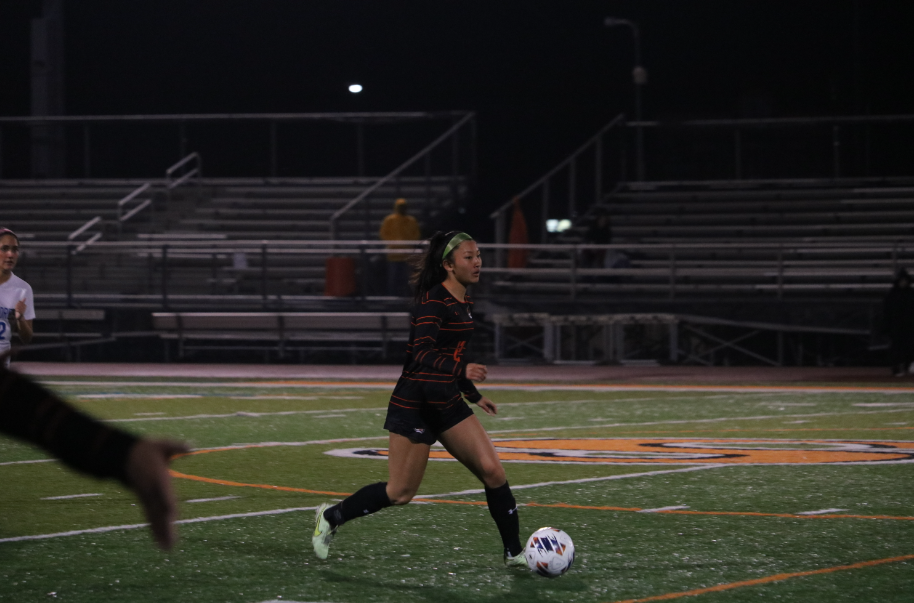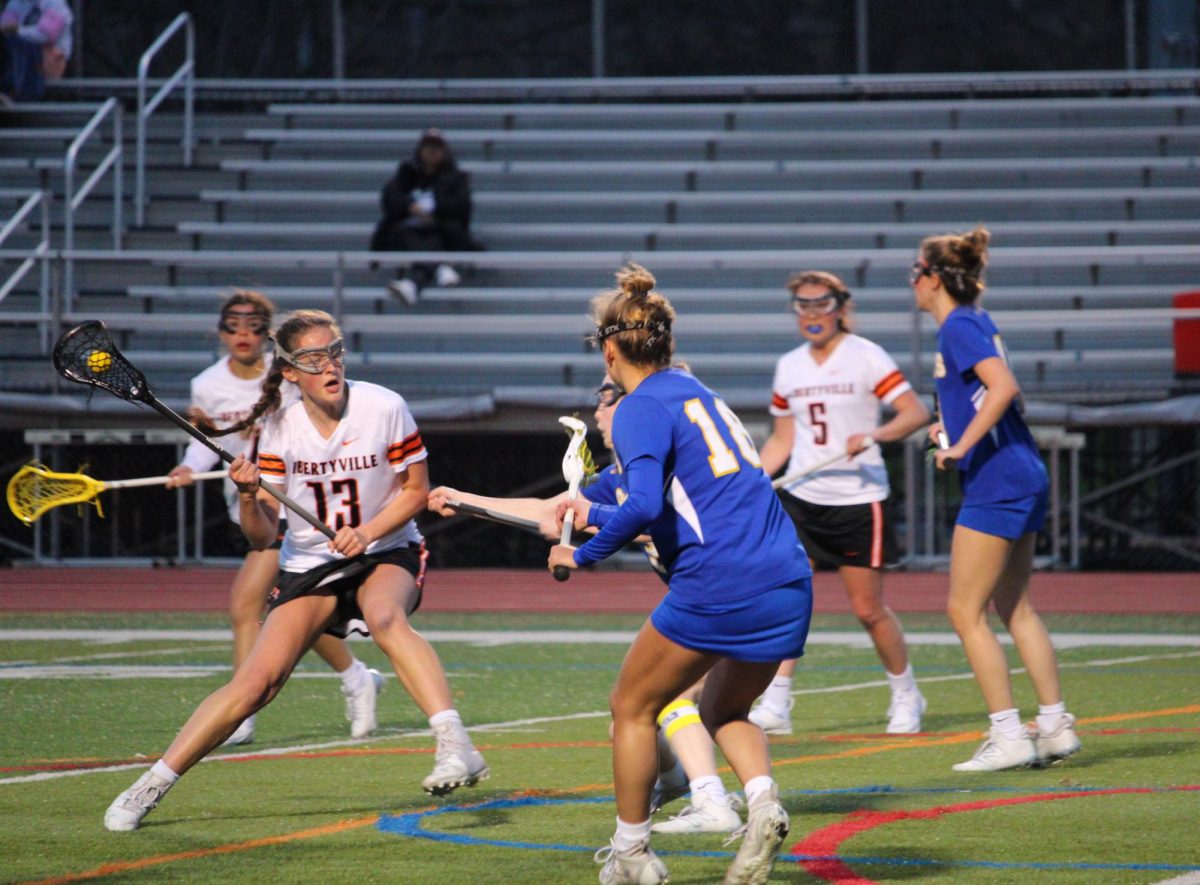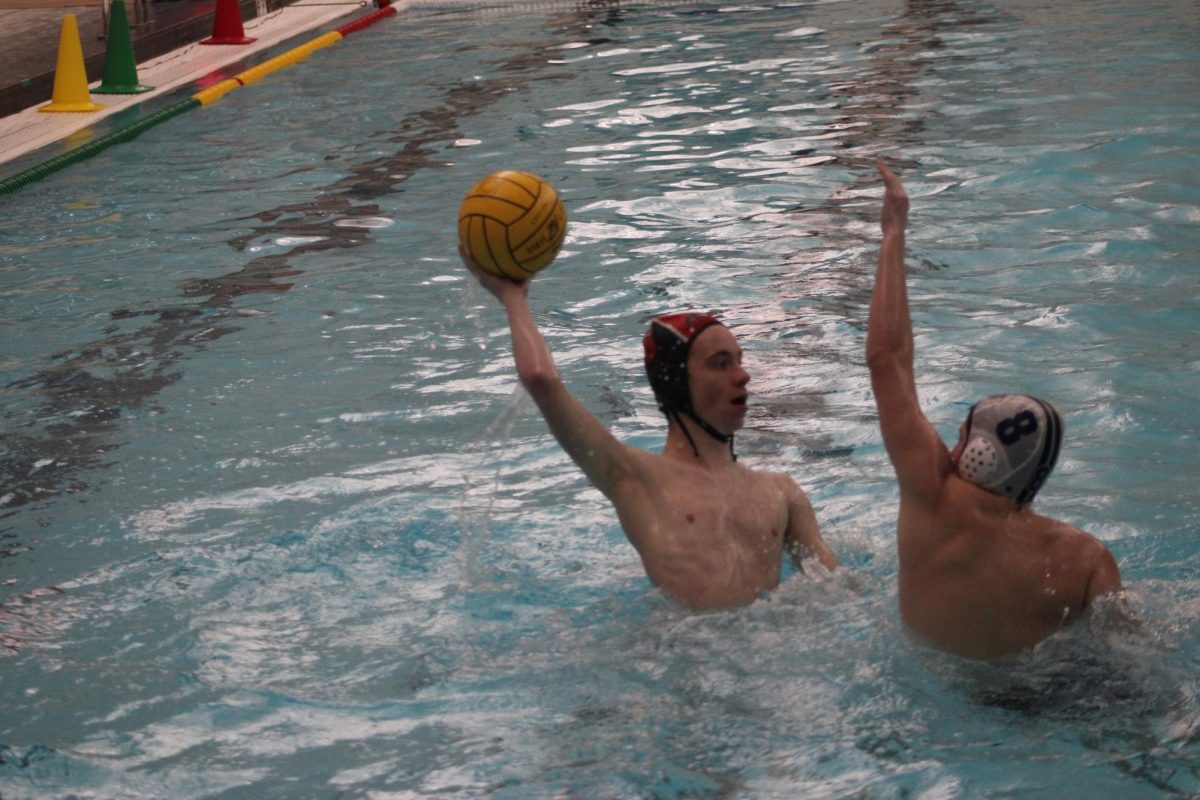
Anatomical view of a knee joint picturing common tendons injured in athletics.
Pop! That is the first sound you will hear after tearing your ACL, a common high school injury in competitive sports. It is not uncommon to see fellow students at LHS on crutches, in leg braces, or being wheeled around due to a sports injury.
Junior Lauren Jordan, a member of the gymnastics squad who injured herself during practice, knows all-too-well the process of traveling through the halls while injured: “My injury is in both bones of my leg close to the ankle area. I originally dislocated my left ankle, which is now broken, and sprained my right. I was in a wheelchair for two weeks, until after my surgery. I am currently on the scooter and crutches for 6-8 weeks, and I will be in a boot for probably a month and a half after that.”
Sports injuries are a frequent occurrence associated with high school sports. According to the AAOS (American Academy of Orthopedic Surgeons), “High school athletes are injured at about the same rate as professional athletes, but in varying degrees.” Approximately two million high school athletes are injured a year according to the Southwest Athletic Trainer Association, SWATA. This is due to the growth process not being fully developed.
Growth is an uneven process: just look around LHS. You have classmates who range from under five feet tall to those giants spanning heights well over six feet. Anatomically speaking, bones grow first. As they grow, they pull at tight muscles and tendons. This process makes high school athletes more vulnerable to muscle, tendon, and growth plate injuries, which range from acute to catastrophic in nature.
Acute injuries, such as sprains, occur when players have a partial or complete tear of a ligament. This can happen when an athlete collides with another individual or simply twists his or her ankle. It is mostly associated with sudden trauma and requires immobilization and icing.
“I got the injury from running hurdles the day before our first indoor meet, and I caught my foot on the last one and put my hand out to break my fall. It felt like I broke my hand. It was numb at first and got more and more painful. I didn’t use my hand for a couple days, iced it, and it got better!” recalled sophomore Kelly Douglas. But not all injuries are caused by a single twist or fall. Some occur due to overuse.
Overuse injuries can affect muscles, tendons, bones, and growth plates. Just ask anyone on the swim team and they will tell you that it is not uncommon to overuse their shoulders while swimming. It is also common for cheerleaders and gymnasts to overuse their wrists and baseball pitchers their elbows and shoulders. Far too often, this overuse can develop into stress fractures. “With shin splints, it was really hard because all I wanted was to keep running and do the workouts and stuff, but that’s what was causing the splints in the first place,” reflected track runner Douglas, who knows the danger of muscle and tendon overuse.
In our body, older bones break down while new bone grows to replace them. In normal situations, this is no big deal, but because athletes are constantly pounding on their feet, the new bone cannot grow fast enough to replace the old bone. This causes stress fractures to occur. Most stress fractures are found in the shin area and in bones of the feet. Stress fractures are associated with swelling and pain when weight bearing and do need medical attention.
The most severe injuries, which occur to millions of high school athletes yearly, are the catastrophic ones. These occur primarily in sports associated with physical contact or strenuous activity such as football, hockey, wrestling, lacrosse, pole vaulting, cheerleading, gymnastics, swimming, and soccer. Catastrophic sports injuries are injuries to the head and neck that could damage the brain or spinal cord, including that of a concussion. According to the American Academy of Pediatrics, “Young athletes with concussions must be evaluated and cleared by a doctor prior to returning to sports.” Junior Tatum Scheibler unfortunately has had her fair share of concussions while playing soccer: “I’ve had like five and if they go unnoticed, they can cause lasting harm. I didn’t go in for one, and I still get episodes where I don’t know where I am or have trouble focusing.”
All injuries should always be taken seriously. Untreated injuries could develop into more severe conditions, which could lead to irreversible, debilitating damage. Far too often, high school athletes are more concerned with their status on the team rather than their health. “As a freshman, all I wanted to do was prove that I deserved my starting spot on the varsity [soccer] team and even though I knew I was tired, I refused to take a break, because in my mind if I stepped off the field and we got scored on while I was off the field, it would be my fault,” stated junior Ellie Daugerdas.
It is imperative that all injuries receive prompt medical attention and treatment prior to returning to play to avoid further injury. The good news is that many high school sports injuries can be avoided through proper conditioning.
High school athletes require proper conditioning, training, and equipment. Using proper techniques during play is the key to avoiding injury. Wearing the right shoe and safety gear is essential, but above all, understanding the rules of the game and displaying good sportsmanship are the keys to athletic safety. Junior Anna Policht recognizes the importance of sportsmanship in each practice and competition for the cheerleading team.
“Cheer is a sport where people get hurt pretty often so we just have
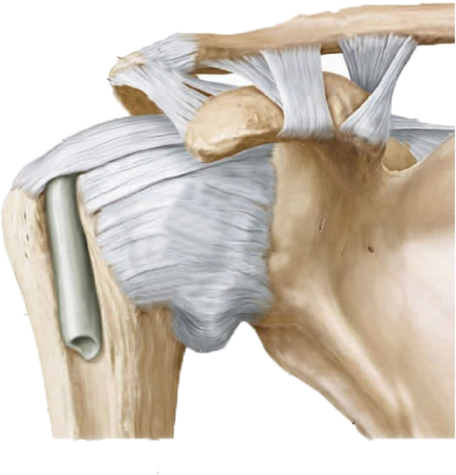
Anatomical view of shoulder joint picturing common tendons injured during athletics.
to make sure that everyone is being as safe as they can. When someone does get hurt, it is important that we let them go easy and stay off of whatever is hurting them. We need to let them know that no one is expecting them to work when they are hurt because we don’t want the injury to get worse. We are here for them. It is part of being a team.”
When athletes begin to push themselves past their max, they run
the risk of injury. It is important to play smart and know your boundaries to stay safe and avoid injury.



